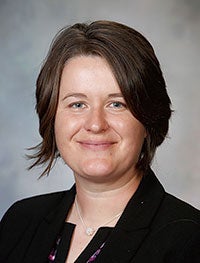Getting ahead of the problem: Mayo online program helps families deal with the effects of trauma
Published 6:27 am Wednesday, October 2, 2019
A new online program offered by Mayo Clinic Health Systems-Austin and Albert Lea is looking to help confront the effects of trauma in the home.
The Youth Resiliency Virtual Program seeks to bring resources together in order to help adults reduce the effects of trauma in the home on children.

Reese Druckenmiller, therapist
“This program, Road to Resiliency, is really looking at how we can take the information we know about adverse child experiences and put it toward how that impacts health and well-being,” said Reese Druckenmiller, therapist in the Department of Psychology and Psychiatry. “How do these experiences impact kids and how we can help buffer the experiences.”
These traumas can include anything from physical and mental abuse to witnessing domestic violence and drug use.
This program in many ways builds off a study in the 1990s, conducted by the Kaiser Premanente and the Centers for Disease Control. Adverse Childhood Experiences (ACEs) showed that these kinds of traumas can impact physical health, in sometimes drastic ways.
“If your ACEs is above a seven, you are more likely to die 20 years younger than the average population,” Druckenmiller said. “We want to give them some tools on how to combat the negative consequences.”
The original study looked at adults and what they experienced when they were younger. The information gleaned from the ACEs study has helped become a platform for programs like Mayo’s Youth Resiliency Virtual Program. Getting to those who are suffering earlier will help transition them to a better life.
“Really, it’s an early intervention to try to negate or to prevent these ACEs,” Druckenmiller said. “The earlier we can intervene the better.”
The Youth Resiliency Virtual Program is web-based and families can either go through the online course or print the materials.
The six-week, game-like program runs from Oct. 7 through Nov. 17 and offers age-appropriate resources for adults and youth to work through together.
There are eight different modules families can work through, even if only in parts. Druckenmiller explained the program is designed to be tailored to a family’s specific needs.
The online resources are items that participants can do, read or watch in any order. Those taking part choose the content that best fits their situation. Parents, grandparents, teachers, community organizers and trusted friends to children can participate.
“At the core of this, we want to be able to reduce and eliminate the root causes of ACEs,” Druckenmiller said. “It really is about educating families about the impact of ACEs.”


